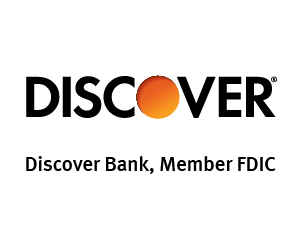I Keep $25,000 in a High-Yield Savings Account -- Here's Why

Image source: Getty Images
A few years ago, I moved $25,000 out of my Chase checking account and into a high-yield savings account (HYSA). I went from earning 0.01% APY (basically nothing) to a 4.00% APY which earns me about $1,000 a year in interest.
On top of that, my HYSA is like a vault for my short-term savings and emergency fund.
Here's how I set it up, and why I believe almost everyone should have one.
Why I think everyone should have an HYSA
Most people ignore interest rates because they're such small numbers. But once you run the math with real dollars, it's hard not to pay attention.
Right now, Chase, Bank of America, and Wells Fargo all pay 0.01% APY on their basic savings accounts. "Big banks" are notoriously stingy when it comes to paying interest.
Now let's compare that to some of the top online banks paying 4.00% APY or more. The difference isn't just noticeable -- it's hundreds (or even thousands) of extra dollars in your pocket each year:
| Balance | Big Bank Interest | HYSA Interest |
|---|---|---|
| $5,000 | $0.50 | $200 |
| $10,000 | $1 | $400 |
| $25,000 | $3 | $1,000 |
| $50,000 | $5 | $2,000 |
Even if you have just $1,000 in savings, the extra interest is worth chasing.
Not only are most online HYSAs free to open and have no monthly fees, they're FDIC-insured (up to $250,000 per depositor, per bank). So your money is just as safe as it would be at a big bank anyway.
That's why I think everyone should have an HYSA. It's the best place to keep idle cash, and earn top interest.
One bank that's turning heads in 2025 is LendingClub with its high-yield savings account. Read our full LendingClub LevelUp Savings review here, and learn about the 4.20% APY with $250+ in monthly deposits, plus automatic savings features that make building your balance easier.
What belongs in my HYSA (and what doesn't)
As much as I love my HYSA, I don't keep all my money there.
Moving money in and out can take a couple days, so it's not really built for day-to-day banking like a checking account.
It's also not great for long-term investing. While 4.00% APY is a great return, I can probably achieve double that by investing in index funds over decades.
So here's what I use my HYSA for, and what I don't keep in there:
Money to keep in an HYSA:
- Emergency fund (three to six months of living expenses)
- Big purchases coming up in one to three years, like a car or home down payment
- Cash buffer for irregular expenses (a big tax bill coming up, or planned repairs)
- Short-term travel funds
Money I don't keep in my HYSA:
- Daily spending money (that belongs in my checking account)
- Long-term investments (those go in index funds, retirement accounts, etc.)
I like to think of my HYSA as the sweet spot between checking and investing. It's safe, easy to access, and earns great interest, too.
My HYSA and checking account are "linked"
The most annoying thing about an HYSA at a different bank is that moving money in or out can take a couple of days.
For me, transfers usually hit the next business day after I make the request, which isn't actually that bad. I just need to plan ahead a little.
To make it as painless as possible, I "link" my accounts on the back end. Most banking apps let you add and save external accounts for quicker transfers.
In my case, I've got a Chase checking account and a Betterment HYSA. Both are linked to each other, so I can schedule money transfers in either direction from either app. It's smooth, quick to set up, and makes my two-bank system feel like one connected setup.
Where do your savings live?
I love helping people bank smarter and make money moves that put more cash in their pocket. And one of the quickest money wins for most savers is to simply move their cash into a different place.
Take a minute to check where your savings live right now, and scrutinize the interest rate of your account. You don't need $20,000+ like me to see meaningful growth. Even a few hundred or a couple thousand dollars can start earning real interest in the right account.
Compare all the top high-yield savings accounts here and start earning more today.
Our Research Expert
We're firm believers in the Golden Rule, which is why editorial opinions are ours alone and have not been previously reviewed, approved, or endorsed by included advertisers. Motley Fool Money does not cover all offers on the market. Motley Fool Money is 100% owned and operated by The Motley Fool. Our knowledgeable team of personal finance editors and analysts are employed by The Motley Fool and held to the same set of publishing standards and editorial integrity while maintaining professional separation from the analysts and editors on other Motley Fool brands. Terms may apply to offers listed on this page. APYs are subject to change at any time without notice.


